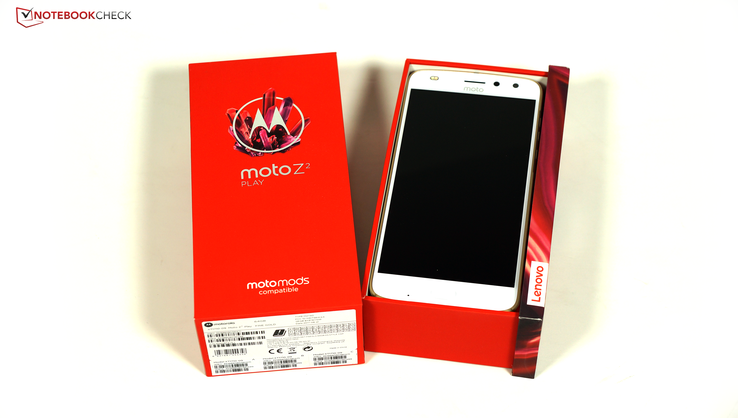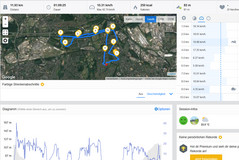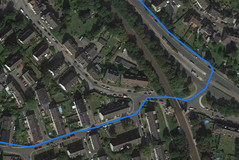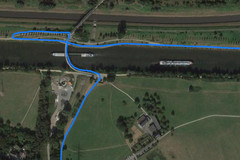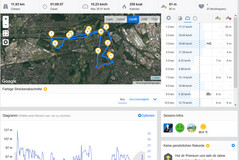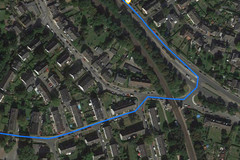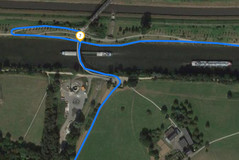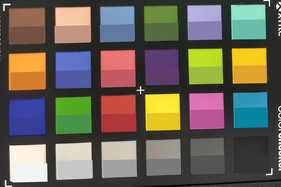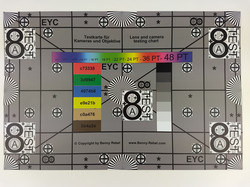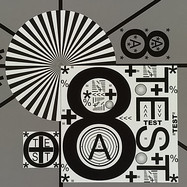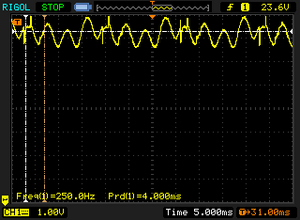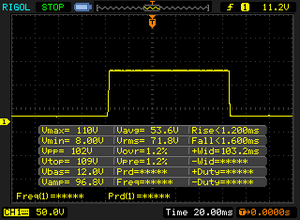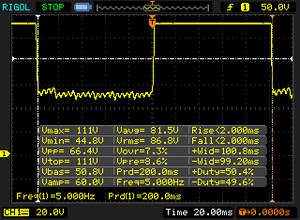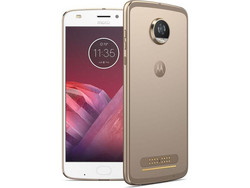Breve análisis del smartphone Lenovo Moto Z2 Play
Top 10 Análisis
» Top 10 Portátiles Multimedia
» Top 10 Portátiles de Juego
» Top 10 Portátiles de Juego ligeros
» Top 10 Portátiles Asequibles de Oficina/Empresa
» Top 10 Portátiles de Juego Ligeros
» Top 10 Portátiles de Oficina/Empresa Premium
» Top 10 Estaciones de Trabajo
» Top 10 Subportátiles
» Top 10 Ultrabooks
» Top 10 Convertibles
» Top 10 Tablets
» Top 10 Tablets Windows
» Top 10 Tablets de menos de 250 Euros
» Top 10 Phablets (>5.5")
» Top 10 Smartphones
» Top 10 Smartphones (≤5")
» Top 10 Smartphones de menos de 300 Euros
» Top 10 Smartphones de menos de 120 Euros
» Top 10 Portátiles de menos de 1000 Euros
» Top 10 Portátiles de menos de 500 Euros
» Top 10 Portátiles de menos de 300 Euros
» Los Mejores Displays de Portátiles Analizados por Notebookcheck
| Networking | |
| iperf3 transmit AX12 | |
| OnePlus 5 | |
| Samsung Galaxy S7 Edge | |
| HTC U Ultra | |
| Honor 8 Pro | |
| Lenovo Moto Z Play | |
| Lenovo Moto Z2 Play | |
| iperf3 receive AX12 | |
| OnePlus 5 | |
| Samsung Galaxy S7 Edge | |
| HTC U Ultra | |
| Honor 8 Pro | |
| Lenovo Moto Z Play | |
| Lenovo Moto Z2 Play | |
| |||||||||||||||||||||||||
iluminación: 81 %
Brillo con batería: 434 cd/m²
Contraste: ∞:1 (Negro: 0 cd/m²)
ΔE ColorChecker Calman: 4.4 | ∀{0.5-29.43 Ø4.78}
ΔE Greyscale Calman: 4.2 | ∀{0.09-98 Ø5}
Gamma: 2.24
CCT: 7343 K
| Lenovo Moto Z2 Play AMOLED, 1920x1080, 5.5" | Honor 8 Pro IPS, 2560x1440, 5.7" | Lenovo Moto Z Play AMOLED, 1920x1080, 5.5" | OnePlus 5 AMOLED, 1920x1080, 5.5" | HTC U Ultra SLCD 5, 2560x1440, 5.7" | Samsung Galaxy S7 Edge Super AMOLED, 2560x1440, 5.5" | |
|---|---|---|---|---|---|---|
| Screen | 19% | 32% | 33% | -20% | 45% | |
| Brightness middle (cd/m²) | 434 | 541 25% | 509 17% | 426 -2% | 470 8% | 554 28% |
| Brightness (cd/m²) | 404 | 514 27% | 511 26% | 431 7% | 445 10% | 552 37% |
| Brightness Distribution (%) | 81 | 91 12% | 93 15% | 93 15% | 88 9% | 96 19% |
| Black Level * (cd/m²) | 0.3 | 0.22 | ||||
| Colorchecker dE 2000 * | 4.4 | 3.2 27% | 2.2 50% | 1.6 64% | 5.5 -25% | 1.59 64% |
| Colorchecker dE 2000 max. * | 8.6 | 7.2 16% | 5.8 33% | 4.1 52% | 11.9 -38% | 2.56 70% |
| Greyscale dE 2000 * | 4.2 | 4 5% | 2 52% | 1.7 60% | 7.6 -81% | 2.01 52% |
| Gamma | 2.24 98% | 2.27 97% | 2.25 98% | 2.25 98% | 2.2 100% | 2.01 109% |
| CCT | 7343 89% | 7120 91% | 6768 96% | 6329 103% | 7454 87% | 6321 103% |
| Contrast (:1) | 1803 | 2136 | ||||
| Color Space (Percent of AdobeRGB 1998) (%) | 82.12 | |||||
| Color Space (Percent of sRGB) (%) | 99.98 |
* ... más pequeño es mejor
Parpadeo de Pantalla / PWM (Pulse-Width Modulation)
| Parpadeo de Pantalla / PWM detectado | 250 Hz | ||
La retroiluminación del display parpadea a 250 Hz (seguramente usa PWM - Pulse-Width Modulation) . La frecuencia de 250 Hz es relativamente baja, por lo que la gente sensible debería ver parpadeos y padecer fatiga visual por la pantalla (usado al brillo indicado a continuación). Comparación: 53 % de todos los dispositivos testados no usaron PWM para atenuar el display. Si se usó, medimos una media de 8095 (mínimo: 5 - máxmo: 343500) Hz. | |||
Tiempos de respuesta del display
| ↔ Tiempo de respuesta de Negro a Blanco | ||
|---|---|---|
| 2.8 ms ... subida ↗ y bajada ↘ combinada | ↗ 1.2 ms subida | |
| ↘ 1.6 ms bajada | ||
| La pantalla mostró tiempos de respuesta muy rápidos en nuestros tests y debería ser adecuada para juegos frenéticos. En comparación, todos los dispositivos de prueba van de ##min### (mínimo) a 240 (máximo) ms. » 12 % de todos los dispositivos son mejores. Esto quiere decir que el tiempo de respuesta medido es mejor que la media (20.2 ms) de todos los dispositivos testados. | ||
| ↔ Tiempo de respuesta 50% Gris a 80% Gris | ||
| 4 ms ... subida ↗ y bajada ↘ combinada | ↗ 2 ms subida | |
| ↘ 2 ms bajada | ||
| La pantalla mostró tiempos de respuesta muy rápidos en nuestros tests y debería ser adecuada para juegos frenéticos. En comparación, todos los dispositivos de prueba van de ##min### (mínimo) a 636 (máximo) ms. » 14 % de todos los dispositivos son mejores. Esto quiere decir que el tiempo de respuesta medido es mejor que la media (31.6 ms) de todos los dispositivos testados. | ||
| AnTuTu v6 - Total Score (ordenar por valor) | |
| Lenovo Moto Z2 Play | |
| Honor 8 Pro | |
| Lenovo Moto Z Play | |
| OnePlus 5 | |
| HTC U Ultra | |
| Samsung Galaxy S7 Edge | |
| PCMark for Android | |
| Work performance score (ordenar por valor) | |
| Lenovo Moto Z2 Play | |
| Honor 8 Pro | |
| Lenovo Moto Z Play | |
| OnePlus 5 | |
| HTC U Ultra | |
| Samsung Galaxy S7 Edge | |
| Work 2.0 performance score (ordenar por valor) | |
| Lenovo Moto Z2 Play | |
| Honor 8 Pro | |
| OnePlus 5 | |
| HTC U Ultra | |
| Geekbench 4.4 | |
| 64 Bit Single-Core Score (ordenar por valor) | |
| Lenovo Moto Z2 Play | |
| Honor 8 Pro | |
| OnePlus 5 | |
| 64 Bit Multi-Core Score (ordenar por valor) | |
| Lenovo Moto Z2 Play | |
| Honor 8 Pro | |
| OnePlus 5 | |
| Compute RenderScript Score (ordenar por valor) | |
| Lenovo Moto Z2 Play | |
| OnePlus 5 | |
| GFXBench (DX / GLBenchmark) 2.7 | |
| T-Rex Onscreen (ordenar por valor) | |
| Lenovo Moto Z2 Play | |
| Honor 8 Pro | |
| Lenovo Moto Z Play | |
| OnePlus 5 | |
| HTC U Ultra | |
| Samsung Galaxy S7 Edge | |
| 1920x1080 T-Rex Offscreen (ordenar por valor) | |
| Lenovo Moto Z2 Play | |
| Honor 8 Pro | |
| Lenovo Moto Z Play | |
| OnePlus 5 | |
| HTC U Ultra | |
| Samsung Galaxy S7 Edge | |
| GFXBench 3.0 | |
| on screen Manhattan Onscreen OGL (ordenar por valor) | |
| Lenovo Moto Z2 Play | |
| Honor 8 Pro | |
| Lenovo Moto Z Play | |
| OnePlus 5 | |
| HTC U Ultra | |
| Samsung Galaxy S7 Edge | |
| 1920x1080 1080p Manhattan Offscreen (ordenar por valor) | |
| Lenovo Moto Z2 Play | |
| Honor 8 Pro | |
| Lenovo Moto Z Play | |
| OnePlus 5 | |
| HTC U Ultra | |
| Samsung Galaxy S7 Edge | |
| GFXBench 3.1 | |
| on screen Manhattan ES 3.1 Onscreen (ordenar por valor) | |
| Lenovo Moto Z2 Play | |
| Honor 8 Pro | |
| Lenovo Moto Z Play | |
| OnePlus 5 | |
| HTC U Ultra | |
| Samsung Galaxy S7 Edge | |
| 1920x1080 Manhattan ES 3.1 Offscreen (ordenar por valor) | |
| Lenovo Moto Z2 Play | |
| Honor 8 Pro | |
| Lenovo Moto Z Play | |
| OnePlus 5 | |
| HTC U Ultra | |
| Samsung Galaxy S7 Edge | |
| GFXBench | |
| on screen Car Chase Onscreen (ordenar por valor) | |
| Lenovo Moto Z2 Play | |
| Honor 8 Pro | |
| Lenovo Moto Z Play | |
| OnePlus 5 | |
| HTC U Ultra | |
| Samsung Galaxy S7 Edge | |
| 1920x1080 Car Chase Offscreen (ordenar por valor) | |
| Lenovo Moto Z2 Play | |
| Honor 8 Pro | |
| Lenovo Moto Z Play | |
| OnePlus 5 | |
| HTC U Ultra | |
| Samsung Galaxy S7 Edge | |
| JetStream 1.1 - Total Score | |
| Samsung Galaxy S7 Edge | |
| OnePlus 5 | |
| Honor 8 Pro | |
| HTC U Ultra | |
| Lenovo Moto Z2 Play | |
| Lenovo Moto Z Play | |
| Octane V2 - Total Score | |
| Samsung Galaxy S7 Edge | |
| OnePlus 5 | |
| Honor 8 Pro | |
| HTC U Ultra | |
| Lenovo Moto Z2 Play | |
| Lenovo Moto Z Play | |
| Mozilla Kraken 1.1 - Total | |
| Lenovo Moto Z Play | |
| Lenovo Moto Z2 Play | |
| HTC U Ultra | |
| Honor 8 Pro | |
| OnePlus 5 | |
| Samsung Galaxy S7 Edge | |
| WebXPRT 2015 - Overall | |
| Samsung Galaxy S7 Edge | |
| OnePlus 5 | |
| Honor 8 Pro | |
| Lenovo Moto Z2 Play | |
| Lenovo Moto Z Play | |
* ... más pequeño es mejor
| Lenovo Moto Z2 Play | Honor 8 Pro | Lenovo Moto Z Play | OnePlus 5 | HTC U Ultra | Samsung Galaxy S7 Edge | |
|---|---|---|---|---|---|---|
| AndroBench 3-5 | 119% | -11% | 115% | 27% | 24% | |
| Sequential Read 256KB (MB/s) | 245.6 | 738 200% | 254.8 4% | 748 205% | 423.9 73% | 487.3 98% |
| Sequential Write 256KB (MB/s) | 137.5 | 187.1 36% | 73.1 -47% | 201.5 47% | 164.7 20% | 145.1 6% |
| Random Read 4KB (MB/s) | 38.2 | 166.4 336% | 38.78 2% | 141 269% | 84.2 120% | 86.7 127% |
| Random Write 4KB (MB/s) | 47.9 | 151.6 216% | 45.58 -5% | 19.3 -60% | 13.7 -71% | 15.79 -67% |
| Sequential Read 256KB SDCard (MB/s) | 79.7 | 54.2 -32% | 74.6 -6% | 82.8 4% | 76.4 -4% | |
| Sequential Write 256KB SDCard (MB/s) | 58.7 | 32.16 -45% | 50.6 -14% | 67.6 15% | 50.4 -14% |
| Asphalt 8: Airborne | |||
| Configuraciones | Valor | ||
| high | 30 fps | ||
| very low | 30 fps | ||
| Dead Trigger 2 | |||
| Configuraciones | Valor | ||
| high | 30 fps | ||
(+) La temperatura máxima en la parte superior es de 33.4 °C / 92 F, frente a la media de 35.2 °C / 95 F, que oscila entre 21.9 y 247 °C para la clase Smartphone.
(+) El fondo se calienta hasta un máximo de 33.1 °C / 92 F, frente a la media de 34 °C / 93 F
(+) En reposo, la temperatura media de la parte superior es de 30.8 °C / 87# F, frente a la media del dispositivo de 32.9 °C / 91 F.
Lenovo Moto Z2 Play análisis de audio
(+) | los altavoces pueden reproducir a un volumen relativamente alto (#86.8 dB)
Graves 100 - 315 Hz
(-) | casi sin bajos - de media 30.9% inferior a la mediana
(±) | la linealidad de los graves es media (9.6% delta a frecuencia anterior)
Medios 400 - 2000 Hz
(+) | medios equilibrados - a sólo 4.9% de la mediana
(+) | los medios son lineales (5.3% delta a la frecuencia anterior)
Altos 2 - 16 kHz
(+) | máximos equilibrados - a sólo 1.9% de la mediana
(+) | los máximos son lineales (3.6% delta a la frecuencia anterior)
Total 100 - 16.000 Hz
(±) | la linealidad del sonido global es media (19.3% de diferencia con la mediana)
En comparación con la misma clase
» 26% de todos los dispositivos probados de esta clase eran mejores, 9% similares, 65% peores
» El mejor tuvo un delta de 11%, la media fue 35%, el peor fue ###max##%
En comparación con todos los dispositivos probados
» 46% de todos los dispositivos probados eran mejores, 8% similares, 47% peores
» El mejor tuvo un delta de 4%, la media fue 24%, el peor fue ###max##%
JBL Soundboost 2 análisis de audio
(+) | los altavoces pueden reproducir a un volumen relativamente alto (#94.6 dB)
Graves 100 - 315 Hz
(±) | lubina reducida - en promedio 10.3% inferior a la mediana
(+) | el bajo es lineal (6.4% delta a la frecuencia anterior)
Medios 400 - 2000 Hz
(+) | medios equilibrados - a sólo 2.6% de la mediana
(+) | los medios son lineales (2.5% delta a la frecuencia anterior)
Altos 2 - 16 kHz
(+) | máximos equilibrados - a sólo 2.8% de la mediana
(+) | los máximos son lineales (4.3% delta a la frecuencia anterior)
Total 100 - 16.000 Hz
(+) | el sonido global es lineal (10.6% de diferencia con la mediana)
En comparación con la misma clase
» 5% de todos los dispositivos probados de esta clase eran mejores, 1% similares, 93% peores
» El mejor tuvo un delta de 4%, la media fue 24%, el peor fue ###max##%
En comparación con todos los dispositivos probados
» 5% de todos los dispositivos probados eran mejores, 1% similares, 93% peores
» El mejor tuvo un delta de 4%, la media fue 24%, el peor fue ###max##%
| Off / Standby | |
| Ocioso | |
| Carga |
|
Clave:
min: | |
| Lenovo Moto Z2 Play 3000 mAh | Honor 8 Pro 4000 mAh | Lenovo Moto Z Play 3510 mAh | OnePlus 5 3300 mAh | HTC U Ultra 3000 mAh | Samsung Galaxy S7 Edge 3600 mAh | |
|---|---|---|---|---|---|---|
| Power Consumption | -189% | -8% | -132% | -192% | -99% | |
| Idle Minimum * (Watt) | 0.45 | 0.98 -118% | 0.51 -13% | 0.73 -62% | 1 -122% | 0.63 -40% |
| Idle Average * (Watt) | 0.78 | 2.27 -191% | 0.87 -12% | 1.44 -85% | 2.41 -209% | 1.1 -41% |
| Idle Maximum * (Watt) | 0.84 | 2.36 -181% | 0.9 -7% | 1.5 -79% | 2.46 -193% | 1.56 -86% |
| Load Average * (Watt) | 1.69 | 6.58 -289% | 1.69 -0% | 6.91 -309% | 6.8 -302% | 5.95 -252% |
| Load Maximum * (Watt) | 3.79 | 10.12 -167% | 4 -6% | 8.51 -125% | 8.9 -135% | 6.7 -77% |
* ... más pequeño es mejor
| Lenovo Moto Z2 Play 3000 mAh | Honor 8 Pro 4000 mAh | Lenovo Moto Z Play 3510 mAh | OnePlus 5 3300 mAh | HTC U Ultra 3000 mAh | Samsung Galaxy S7 Edge 3600 mAh | |
|---|---|---|---|---|---|---|
| Duración de Batería | -32% | 33% | -29% | -30% | -5% | |
| Reader / Idle (h) | 26.5 | 23 -13% | 42.3 60% | 25.6 -3% | 26.1 -2% | 27.7 5% |
| H.264 (h) | 15.8 | 11.3 -28% | 19.8 25% | 10.4 -34% | 10.1 -36% | 15.2 -4% |
| WiFi v1.3 (h) | 12.5 | 9.6 -23% | 13.7 10% | 8.6 -31% | 9.1 -27% | 12.2 -2% |
| Load (h) | 8 | 3 -62% | 10.9 36% | 4.1 -49% | 3.6 -55% | 6.5 -19% |
Pro
Contra
El Lenovo Moto Z2 Play es un buen smartphone. Parecería aún mejor si el Moto Z Play (ya no) existiera. El predecesor hace muchas cosas igual de bien, algunas un poco peor, y otras cosas aún mejor mientras que es considerablemente más barato.
¿Hay alguna razón para comprar al sucesor? La carcasa del Moto Z2 Play ha sido reelaborada y ahora es aún más delgada. Esto habría sido un punto en su estrategia de márketing de ser un smartphone normal. Sin embargo, recibe otra dimensión en el Moto Z2 Play: Los Moto Mods añadidos pueden hacer que un milímetro sea bastante importante. El menor peso también es un argumento ya que los Mods añaden bastante peso. Aparte de eso, el comprador obtiene una carcasa muy rígida y elegante con un escáner de huella digital menos visible que en el predecesor. Trae LTE rápido, pero el Wi-Fi 802.11ac aún no y las tasas de transmisión Wi-Fi son en realidad audaces. A cambio, el módulo GPS es muy preciso y las cámaras toman buenas fotos. La pantalla es más oscura y el rendimiento es sólo marginalmente superior al del predecesor. La duración de la batería sigue siendo de primera clase, pero también mucho más corta que la del Lenovo Z Play.
Habríamos dado la bienvenida a tomar más riesgos para la actualización. El Lenovo Moto Z2 Play es sólo una versión reelaborada del Moto Z Play con una silueta más delgada, así como una batería más pequeña que apenas ofrece innovaciones reales.
Podemos dar al Moto Z2 Play una recomendación de compra si el comprador encuentra el sistema Moto Mods convincente, el cual funciona muy fácilmente y bien. El problema aquí es que a menudo existen buenas alternativas, como una batería esterna o un altavoz Bluetooth. Comparado a eso, los Moto Mods apenas ofrecen ventajas reales. Sin embargo, los compradores también deben considerar el Moto Z Play e incluso el Moto Z: Ambos son actualmente mucho más baratos y Lenovo también garantiza la compatibilidad con los Moto Mods para los próximos años.
Ésta es una versión acortada del análisis original. Puedes leer el análisis completo en inglés aquí.
Lenovo Moto Z2 Play
- 08/15/2017 v6 (old)
Florian Wimmer




